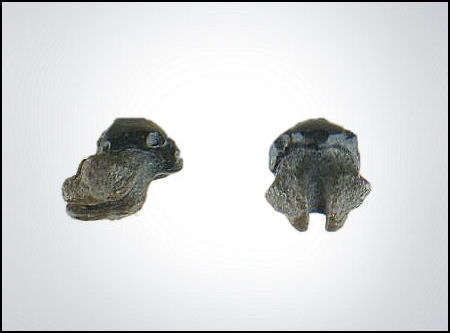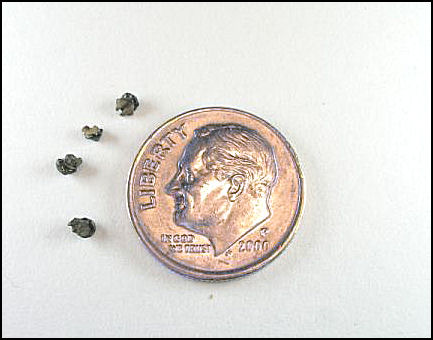|
SkaTES, RAYS and FISH |
|
GUITARFISH The teeth of Rhinobatos casieri, also known as the Guitarfish, are small, averaging a little less than 2mm wide. Besides their size, the teeth of this skate have a few characteristics that make them difficult to confuse with any other species found in New Jersey. To me, what makes this tooth stand out is the root. The root is large with a very deep nutrient grove and when viewed from the side, angles towards the lingual side of the tooth. The crown is smooth with a transverse ridge and has a bizarre looking central uvula. There are also smaller lateral uvula to either side of the central uvula. On the labial side of the crown, two to three small depressions may be present.
The teeth of
Rhinobatos casieri are small, averaging under 2mm
In-vivo wear on the crown can completely obscure the transverse
ridge.
Side view of Rhinobatos casieri, the root
angles towards the lingual
Looking at a guitarfish tooth from above. (A) the
central uvula,
The roots are unique looking, but very prone to
breakage.
Using a US dime for scale shows just how small these
teeth are. |




